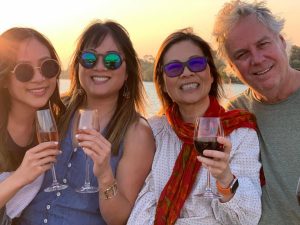September 4, 2019 – Volume 21, Issue 7
In This Issue
- Flanigan’s EcoLogic: Welcome to Africa!
- The Republic of South Africa
- Visiting the Falls in Zimbabwe
- Kenya’s Masai Mara Experience
- The Only Thing Better than Getting Away…
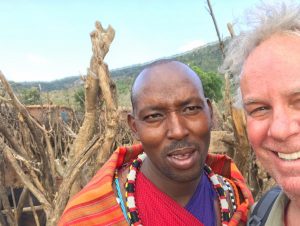
Flanigan’s EcoLogic: Welcome to Africa!
For Terry, Kristin, and I, it was our first trip to Africa. Stephanie had been to Morocco. This time, their mom’s birthday celebration… Terry’s right of passage! This travelogue reflects my impressions of a taste of Africa, a two-and-a- half week, three-country excursion, a short but potent immersion.
The continent of Africa is regarded as the origin of humans, homo sapiens. It’s the second largest continent in the world, covering 20% of the Earth’s land area. Only Asia is bigger. Africa is made up of 11,730,000 square miles; three times the United States (3,531,905 square miles). Africa is divided into 54 countries, plus two disputed countries. It has the youngest average age of population: 19.7 years versus 30.4 years globally.
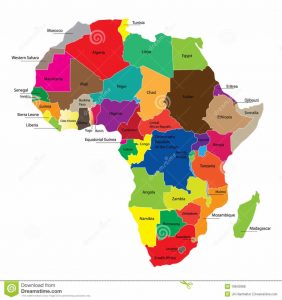
Polished jet service. A multi-cultural, multilingual flight crew, the in-flight entertainment system is great. Our crew originated from 14 countries and speaks 17 languages. We land at Dubai International, an uber -modern airport, meet Stephanie just in from New York. A layover and four weary travelers are off to Cape Town. That’s an 8.5-hour flight. Finally we deplane in South Africa after 36 hours of travel.
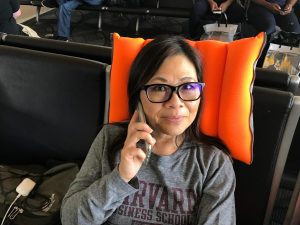
Africa is rich in oil and gas with five of the top 30 producers in the world. Libya has the greatest oil reserves in Africa; Nigeria the biggest production, and the world’s sixth largest producing nation. The African continent is an exporter of oil and gas. The south of Africa has the coal. South Africa has 91% of the continent’s coal reserves and 70% of its uranium. Central Africa has hydroelectric resources. Wind and solar and geothermal currently make small contributions but are emerging and gaining ground. We’d fly by a ridge-top wind farm when approaching Nairobi.
The Republic of South Africa

South Africa’s population was 57.7 million in 2018; 8% of the population is white, 4.5 million. The country’s central plateau provides for vast expanses and “big game,” notably in Kruger National Park. South Africa is also knowns for its western cape made up of beaches and winelands.
The country has been progressive on climate protection; a signatory to the Paris Agreement. Its “Nationally Declared Contributions (NDCs)” include solar deployment, decarbonizing electricity by 2050, increasing electric vehicles and hybrids, planning a carbon tax, and developing a National Adaptation Plan. But South Africa is still marred by income inequality, with a quarter of the people unemployed and living on less than $1.25/day.
Cape Town
Cape Town is South Africa’s most diverse, advanced, and beautiful city. It’s at the southern tip of Africa, close to Antarctica. The Dutch colonized South Africa in the 1400s. A take-off of their language is still in use in the Afrikaans language. Then the British came and took over in the 1600s. Today Cape Town is a city of 3.5 million.

Cape Town was established in 1652 as a refueling station for ships bound east on the Spice Route. Today it is a bustling port. We’re staying at the waterfront, just up the bluff from the port’s mix of fine dining, touristy shopping, and commercial fishing. There, boats have extra-high gunwales to fend off choppy seas. Nearby there are cranes for shipping containers. Cape Town is a hub for international commerce. I walk to a working drydock now surrounded by trendy hotels. Seals lay about.

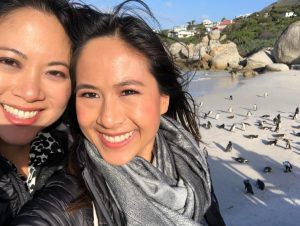
The Post-Apartheid Decades
The National Party imposed apartheid in 1948, institutionalizing a system of racial segregation to benefit the white minority that was in effect until the early 1990s. The word “apartheid” means separateness in Afrikaans language. The Population Registration Act of 1950 required all residents to be classified as one of four races: White, Black, Colored, and Indian. The government’s method for determining who was Black was done by measure of the width of nostrils and the thickness of lips. White’s percentage of the country’s population fell from 20% to 13% during apartheid, while Blacks increased from 68 to 76%. Today Blacks are 76%, Whites 9%, Colored 9%, and Asian 2.5%.
Our guide Clinton tells us about apartheid with Blacks and Colored relegated to certain areas, and even beaches. One beach we pass was an “early Black beach,” known for its sharks and thus undesirable for Whites. Another beach reserved morning hours for Whites, midday hours for Colored, and then later for Blacks when sharks were most prevalent. The Pass Law required Blacks to carry government-issued identification cards, the Blacks called “dumb passes,” at all times. A noted protest was organized by Robert Sobukwe in which all Blacks left their cards at home on a designated day, resulting in thousands of arrests and ultimately left 249 dead in the Sharpeville Massacre.
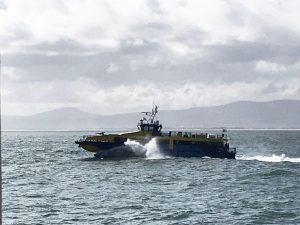
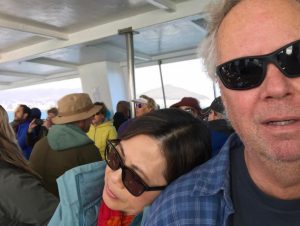
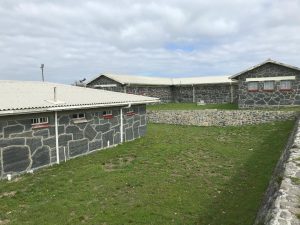
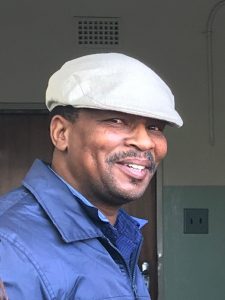
Now the island is home to a couple hundred residents that manage the heritage site. Our guide was an inmate, freed after five years, who is now living on the island and relating its sordid past. He is soft-spoken, gracious, and forgiving. Mandela urged forgiveness, and not to forget the inequality and atrocity of apartheid. Our guide thanks us all for our countries’ boycotts of South Africa that contributed to the end of apartheid.
Energy in South Africa
There’s considerable solar development here in Cape Town, all around our hotel are rooftop systems, we saw a large, ground-mount array at Robben Island. South Africa’s new solar program called REIPPPP, Renewable Energy Independent Power Producer Procurement Program, has a goal is 956 MW of new solar capacity. Already South Africa has the 75 MW Lesedi solar power plant. By 2016, the country had 1,329 MW of installed solar capacity.
Kruger National Park
Flight to Hodspruit airport from Cape Town. Hodspruit is a small military airstrip leased to commercial airlines. Upon final descent I think I see elephants in a watering hole. No. There’s a safari jeep there too. This looks like a movie. Can this be real?
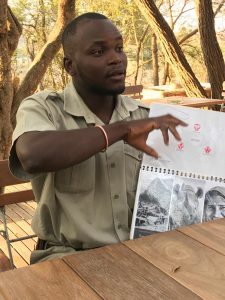
We get to our lodge in time for the evening game drive. Ngala is a 37,000-acre reserve leased within the 4.9 million-acre Kruger National Park. Our lodge is neatly settled into the African landscape. Steenboks and springboks look like small deer and loiter in the safety of the lodge. Baboons are here too. The pool is frequented by elephants that dip their trunks in for a drink. The next day we see a herd of buffalo there. We meet Trico and Given, our ranger and tracker.
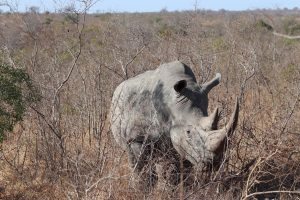
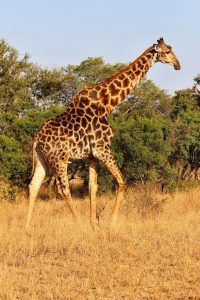
Here’s the drill for game drive days: Up at 5:30 with coffee delivered. On the jeep at 6:00, thankfully with blankets and hot water bottles in our laps. We’re ready to experience crisp, cold mornings when the animals are most active. Tricor and Given do an awesome job of introducing the bush ecosystems. We ask a million questions. Meanwhile they expertly fill us with close-up views of animals. We see buffalo, giraffes, and come close to a rhinoceros in the bush. We see lots of zebras. They expertly find a leopard in the grass. Later they spot and we sit and watch a pride of lions at rest, this time including a white lion.

One evening it’s getting dark and Given scans the bush with a torch. When he spots wildlife he puts on a red lens. One evening we pass by 6 – 7 rhinos just after dark and Given instantly shuts off the light to protect them. There’s a red moon rising. Trico explains that its “the poachers moon.” The full moon makes it easy for poachers to operate in the stealth of night without torches. We’re glad to pass by the anti-poaching patrol shortly thereafter. They use dogs to track poachers. But three rhinos have been killed on the reserve in the past four months.
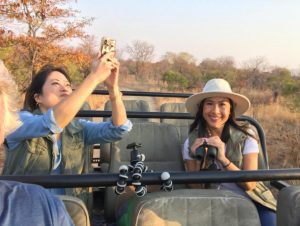
Three and half hours driving to our next South African airport. Along the way we see wildlife. We slip out of our slice of safari chic luxury, passing poor communities, modest houses made of cinder blocks. I notice a “free circumcision clinic.” Workers along the roadside catch Toyota taxi vans, transit something between Filipino jitneys and Peruvian taxi/buses. We fly 1.25 hours, Nelspruit to Livingstone, Zambia.
Visiting the Falls in Zimbabwe
Arrivals at Livingstone, Zambia; then long line to buy visas. Beks meets us at the airport and guides us across the border to Zimbabwe. I’ve just read about the history of British explorations into Africa’s interior. The notorious David Livingstone was determined to chart the headwaters of the Nile but ran out of resources and was sick and lost. Right here.
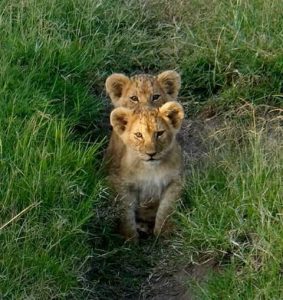
Then a journalist named Stanley was sent by the New York Herald to locate Livingstone. Stanley did ultimately find him, famously greeting him with, “Dr. Livingstone I presume?” But Livingstone was too determined to chart the Nile, and sought to re-supply instead of returning to England. But he was weak and died before additional supplies arrived. This is the spot where his heart was removed and buried. His body then packed with salts and returned to London where he is interred at Westminster Abbey.
Background
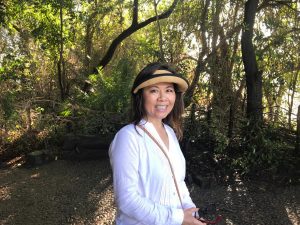
Certainly government corruption is one of the reasons for Zimbabwe’s poor condition. Robert Mugabe was a dominant political leader in Zimbabwe for four decades. While known as a revolutionary hero during the country’s path to independence, Mugabe was later viewed as a dictator, accused of mismanagement, corruption, anti-white racism, and human-rights violations. We’re told that the leaders of the 2017 coup are similarly corrupt, hampering the country’s attempts to develop for its people.
Energy in Zimbabwe
The country is experiencing daily power curtailments; “load shedding” is a common term. Our lodge has its own generator. Country wide there is 1,100 MW of capacity and 1,500 MW of demand. Load shedding is essential: In 2016, Zimbabwe Electric Supply Authority only generated 6.8 billion kWh when experiencing demand of 7.1 billion kWh.
Game Drives Day 5 & 6
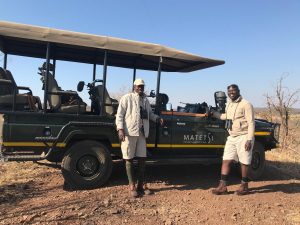
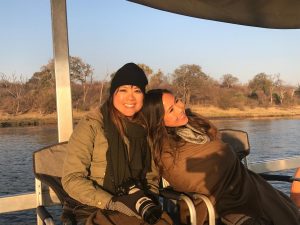
Buffalo, zebras, and elephants are plentiful here too. Elephants much up close on seemingly indigestible one-inch diameter sticks. We’re told they need to consume ~800 pounds of food each day. The rhinos that were here have been moved to safer areas. We learn that Zimbabwe has a shoot-to-kill policy for poachers. In South Africa, the country’s human rights policies do not allow that. Poachers sell rhinoceros horns primarily to Asia for aphrodisiacs.
Victoria Falls


There are 14 viewpoints of Victoria Falls that we diligently hike and digitally document. Across the gorge is the Devil’s Pool, hanging precariously at the top, a crazy spot. Guides help thrill-seekers wade across the river water at the precipice of the falls to this little pool. What a rush that must be! Only one death recently, a guide swept over.
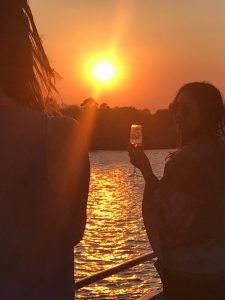
We walk to the famous Victoria Falls Bridge. It was manufactured in pieces in England, shipped and assembled in Zimbabwe. The bridge which carries cars and trains, and deep gorge, is also used for bungie jumping. In a celebrated accident there, the line broke and a 22-year old Australian female jumper plunged into the Zambezi River, emerging remarkably unscathed.
Kenya’s Masai Mara Experience
Working our way northeast; Kenyan Air flight from Vic Falls to Nairobi. Aging 737 marked by dilapidation, ventilation in particular. Overnight at Hemingways Hotel in Nairobi. Nice digs. The pungent City smell, however, reminds me of Manila, humid burnt stuff including plastics. About a million of Nairobi’s citizens live in shantytowns. We pass one, marked by corrugated metal, clothes lines, haphazard power lines. Folks there earn less than a dollar a day.
The Country of Kenya has an installed capacity of 2,651 MW. Its peak demand in 2018 was 1,802 MW. That resulted in 7,701 GWh of generation, about 166 kWh per capita. Demand in Kenya is growing at 3.6% annually. The Kenya Electric Generating Company supplies 75% of this power from hydro, geothermal, thermal, and wind: 52% hydro, 32.5 from fossils, 13.2 geothermal, 1.8% biogas conversion, and 0.4% from wind, Nairobi uses 50% of the country’s power. It imports crude oil and natural gas.
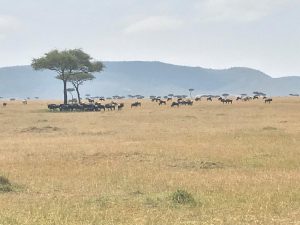
Kenya was the first African nation to develop geothermal. It has 200 MW now installed with a 10,000 MW potential identified. In 2018, Kenya developed the first utility-scale solar, the 54.6 MW Garissa Solar Power Plant. It provides 2% of Kenya’s needs was first and largest in East and Central Africa. Kenya leads Africa with solar systems per capita. We hear that many Kenyans are choosing independent solar instead of connecting to the grid.
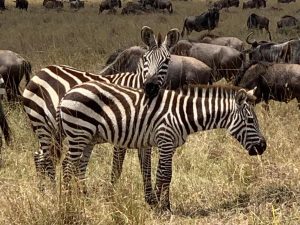
There are a number of progressive actions taken by Kenya thus far: It has produced “Vision 2030, National Climate Change Action Plan.” It has developed the first carbon exchange in Africa. And it’s been working on microfinance. The World Bank and IFC have partnered in Lighting Africa Initiative.
Safari on the Masai Mara
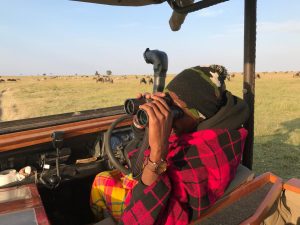

With fellow guests and guides we discuss Kenya’s high population growth over dinner. Our guide is one of 44 siblings; another staffer is one of 30. It has been a source of pride and respect for their fathers to have multiple wives. A small homestead we pass has huts for each wife. But we hear that there is now more focus on having a single wife and fewer kids. Nevertheless, Senior has four children, another lodge worker five, another six.

Game Drives 7,8,9: Lots more game driving. We’re up and at it early to catch the morning period when the game is most active. Coffee in the cabins, then we hit the trail. One morning we have breakfast overlooking the Masai Mara River, teaming with hippos and crocodiles. The hippos lounge all day in the cool of the river, then feed at night. We’re amazed to learn that hippopotamuses – the third largest mammals of all — can run at up to 19 miles per hour, faster than the average human (but not as fast as Hussein Bolt as African lore has it. Bolt clocked in a 27.7 MPH!) And, hippos kill more humans in Africa than any other wild animal.
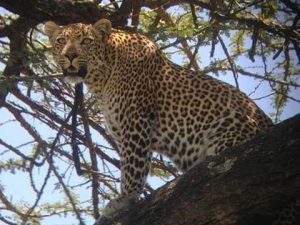
Come upon a recently killed topi. There’s an exhausted mamma lion resting in the grass recovering from the hunt. We sit close and wait. Her three cubs play, toss, and roll, slumbering in the shaded grasses waiting for their mama to rip open the fresh kill. When she finally gets up, we watch her licking her kill, then ripping first at its genitals, and eating with great satisfaction before our eyes. Next stop, our guide finds a mama cheetah and her six cubs … the mama ripping on a greater gazelle she’s just killed, the one-month old babies lick the blood and chew on the fresh meat. It’s the circle of life, the survival of the fittest on full display here.
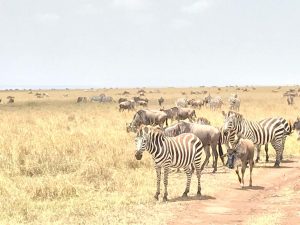
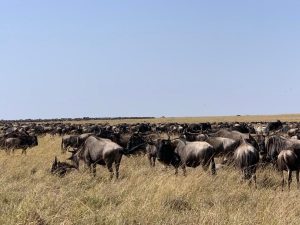
The Masai Mara culminates our nine days of game driving in three countries. From our cabin deck are zebras, gazelles, impalas, and giraffes. On the plains we see greater and lesser kudo, eland, topi, warthogs, monkeys, mongeese, jackals, hyaenas. We see endless “ellies” (elephants), hippos, gazelle ,and are fulfilled by sightings of lions and cheetahs. Birders are equally impressed by vultures, eagles, storks, and herons and the mighty bateleurs.
We’d seen hyenas on every game drive, and at night in the glow of a red torch. They can eat one third of their body weight at one meal, eating practically every part of the animal, including skin, hooves, and teeth. Their bone-cracking jaws are able to crush bones, readying for highly acidic stomachs. We witness the progression at a recent kill, the vultures, the jackals, the hyenas.
Visiting a Masai Village


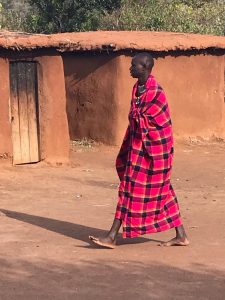
The village has no electricity and no running water. We ask about toilets but the issue is skirted. About 100 yards away is their school, made of western-style, stick-built construction. They seem proud of the school. In contrast, the Maasai huts are crude, made of sticks and mud; their rooftops a mixture of cow dung and mud and clay. We can’t imagine the mud in rainy season.
Off the Grid Solutions
Maurice talks solar in Kenya. Individuals and businesses are tired of unreliable grid power. They are forced to have backup systems. How can lodges run on the grid if the grid goes down for 5 – 6 hours a day? They need generators on site. Solar is coming on strong; solar plus storage has a big future here. Yes, there are PPAs in Kenya for credit-worthy commercial and institutional deals.
Hi-Value Solar: Maurice introduces me to M-Kopa, hi-value solar. This Nairobi-based company offers a solar leasing service for off-the-grid villagers. Mini solar systems are practical means of getting basic lighting and phone charging to the people. It’s a way to wean many off the use kerosene lanterns for lighting. M-Kopa has sold 700,000 units and rightly claims to be “upgrading lives.”
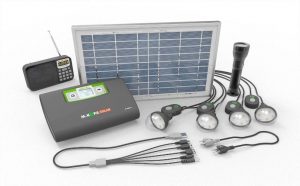
A second, 30-watt option features all of the above plus a 24-inch TV. A third, 60-watt option has a 32-inch TV. A fourth option includes a 100-liter fridge with a $135 deposit and a daily cost of $1.50 for 650 days, a total cost of $1,104, or $812 upfront. M-Kopa never goes on site, instead sells equipment secured by cell phone numbers. The systems can be remotely disabled if payments have not been made. Elegant and highly appropriate technology.
The only thing better than getting away…
What a trip, experiences that we’ll never forget. Toasted Terry’s birthday royally several times. And what venues to do so: in Southern and Eastern Africa. We feasted on good scenery, good foods, good learning, and made lots of friends. A great time; the wilds of Africa on vivid display; a dive into ecosystems and remote cultures. Deep reflections the stark contrasts between the haves and have-nots.

